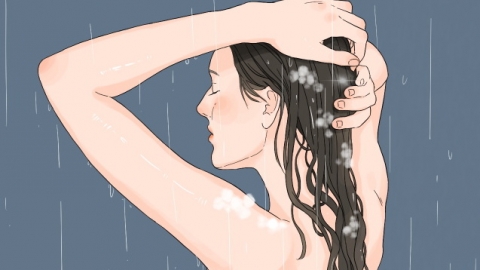Why do my calves feel swollen after taking a hot shower?
Generally, the main causes of a swollen sensation in the lower legs after taking a hot shower include vasodilation due to hot water stimulation, prolonged bathing duration, impaired lymphatic circulation, lower extremity varicose veins, and venous valve insufficiency. If discomfort occurs, it is recommended to seek timely medical evaluation and treatment at a正规 hospital. Detailed explanations are as follows:
1. Vasodilation due to hot water stimulation
Hot water during showers increases skin temperature, causing blood vessels in the lower legs to dilate. This leads to increased local blood flow and accumulation of fluid in tissue spaces, resulting in a feeling of swelling. To alleviate this, shorten bathing time, keep water temperature between 38–40°C, avoid prolonged soaking of the legs, dry off promptly after showering, and elevate the legs for 10–15 minutes to promote venous return.

2. Prolonged bathing duration
Bathing for more than 20 minutes, especially while standing or keeping the legs in a dependent position, allows gravity to cause blood pooling in the lower limbs, leading to swelling. Limit shower time to 10–15 minutes. During bathing, periodically move your ankles to stimulate circulation and avoid maintaining a fixed posture throughout.
3. Impaired lymphatic circulation
Blockage or dysfunction of lymphatic vessels in the lower legs can slow lymphatic drainage when stimulated by heat, causing lymph fluid to accumulate in tissues and produce a swollen sensation. Under medical guidance, consider localized lymphatic massage and medications such as diosmin tablets, micronized purified flavonoid fraction (MPFF), or melilotus extract tablets. Avoid wearing tight clothing that compresses the lower legs and engage in mild physical activities like walking.
4. Lower extremity varicose veins
Weakened vein walls or malfunctioning venous valves allow veins to expand further under hot water, worsening blood reflux obstruction and causing leg swelling. Medical treatments may include wearing compression stockings, taking oral medications such as MPFF, diosmin, or calcium dobesilate capsules, avoiding prolonged standing, and elevating the legs during rest.
5. Venous valve insufficiency in the lower limbs
Dysfunctional venous valves fail to prevent backward blood flow. After a hot shower, increased venous pressure exacerbates blood pooling in the lower legs, leading to swelling. Under medical supervision, medications such as hesperidin tablets, horse chestnut seed extract, or rivaroxaban may be prescribed. In severe cases, surgical interventions like venous valve repair or endovenous laser ablation might be necessary. After surgery, avoid strenuous exercise.
In daily life, control bath water temperature and duration to minimize excessive heat exposure; avoid prolonged sitting or standing, and regularly move the lower limbs; wear loose, comfortable pants to prevent compression of leg blood vessels; elevate the legs during rest to enhance blood and lymphatic return; and undergo regular check-ups of lower limb vascular and lymphatic function for early detection and intervention.




